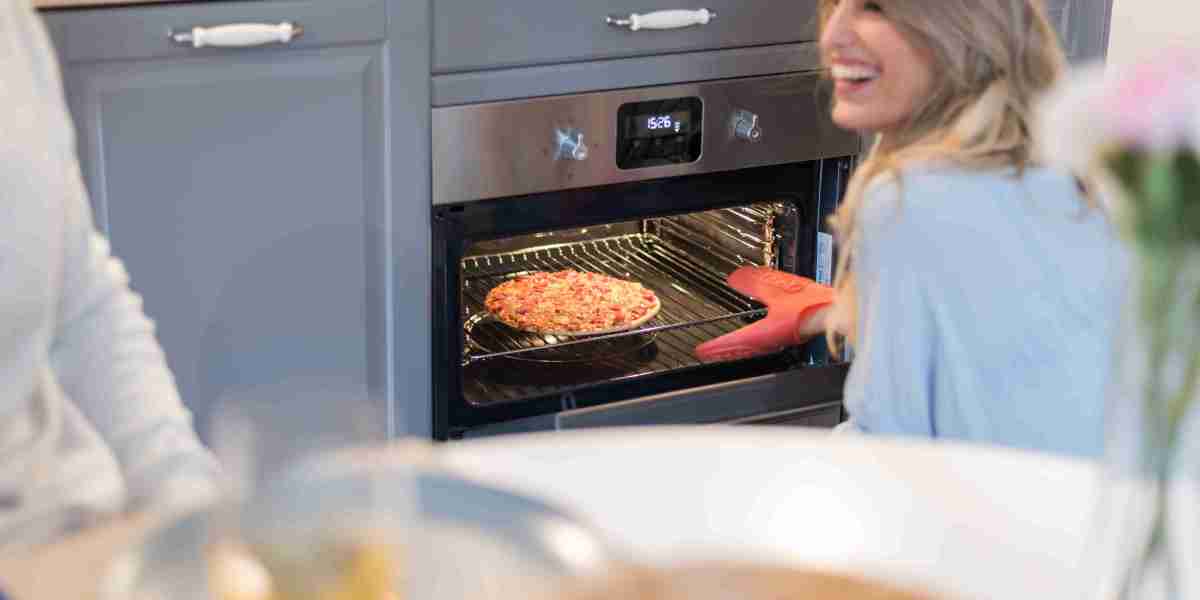The Complete Guide to Ovens and Hobs: Choosing the Right Appliances for Your Kitchen
When it comes to producing culinary work of arts, the value of quality kitchen appliances can not be overemphasized. Ovens cookers and ovens hobs are the heart of any kitchen, allowing home cooks and professional chefs alike to develop, bake, and sauté delicious meals. Understanding the various kinds of ovens and hobs, along with their functions and functionalities, is essential for making informed purchasing choices. This article uses an in-depth look at ovens and hobs, helping you browse the options offered so that you can boost your kitchen's effectiveness and adaptability.
Understanding Ovens
Ovens are necessary for cooking and baking and can be found in numerous types to meet varied culinary requirements. Here is an introduction of the most common kinds of ovens:

1. Traditional Ovens
Traditional ovens work by heating the air inside with gas or electric aspects. They are best for baking cakes, roasting meats, and cooking casseroles.
2. Convection Ovens
These ovens utilize a fan to circulate hot air, supplying an even temperature throughout, which can significantly reduce cooking times. They are ideal for baking cookies or roasting vegetables.
3. Microwave Ovens
Microwaves cook food rapidly utilizing electromagnetic radiation. They are best for reheating leftovers or thawing frozen foods however are not suitable for browning or crisping.
4. Wall Ovens
Incorporating a wall oven into your kitchen style can conserve space and develop a smooth aesthetic. They function much like standard or stoves but are built into the wall for easy access.
5. Range Ovens
These ovens integrate stovetop burners with an oven, offering adaptability for those who choose a single device for all cooking requirements.
| Type | Cooking Method | Best For |
|---|---|---|
| Standard | Electric/Gas | Baking, roasting |
| Convection | Air blood circulation | Quick cooking, even baking |
| Microwave | Electro-magnetic | Reheating, thawing |
| Wall Ovens | Electric/Gas | Space-saving, streamlined design |
| Range Ovens | Electric/Gas | Versatile cooking |
Checking out Hobs
Hobs, likewise called cooktops or stovetops, supply the surface to prepare pans directly over a heat source. Like ovens, hobs are available in different types, which can be categorized as follows:
1. Gas Hobs
These hobs use a flame for cooking and offer instant heat control. They are favored by numerous chefs for their responsiveness and accuracy.
2. Electric Hobs
Electric hobs use coils or flat surface areas to heat pans. They provide a consistent heat source, however they may take longer to cool off compared to gas hobs.
3. Induction Hobs
Induction hobs use electro-magnetic energy to heat pots and pans straight, making them extremely efficient and faster to prepare. They are likewise much easier to clean as the surface remains relatively cool.
4. Solid Plate Hobs
These are older innovation that uses solid metal plates to offer heat. They are long lasting however are less efficient than contemporary options.
| Type | Heat Source | Advantages | Drawbacks |
|---|---|---|---|
| Gas Hobs | Flame | Instant heat control | Requires gas connection |
| Electric Hobs | Electric coils | Consistent heat | Slower to cool off |
| Induction Hobs | Electromagnetic | Quick cooking, energy-efficient | Needs compatible cookware |
| Solid Plate Hobs | Strong metal plate | Resilience | Less efficient |
Selecting the Right Appliances
Choosing the best oven and hob for your kitchen involves thinking about numerous factors:
1. Area and Layout
Step your kitchen location to figure out the size and positioning of the oven and hob. Ensure there is sufficient ventilation, particularly for gas home appliances.
2. Cooking Style
Think about how frequently you prepare and the kind of meals you prepare. A convection oven might match passionate bakers, while somebody who regularly stir-fries may choose an induction hob.
3. Energy Source
Select the energy source that best fits your way of life. Gas provides immediate control, while electric and induction hobs offer ease of usage and are often more energy-efficient.
4. Budget
Determine your spending plan for kitchen appliances. Ovens and hobs vary substantially in rate, depending upon functions and brand names. Focus on important functions that meet your needs.
5. Functions
Look for performances such as self-cleaning choices, smart innovation compatibility, particular rack setups for ovens, and security features for hobs.
Regularly Asked Questions (FAQs)
Q1: What is the distinction in between a standard oven and a convection oven?A1: Conventional ovens warm the air within without fans, while stove utilize a fan to flow hot air for more even cooking. Q2: Can I utilize aluminum cookware on induction hobs?A2: No, induction hobs need ferrous (magnetic )materials like cast iron or stainless-steel to work effectively. Q3: Do gas hobs heat quicker than electric hobs?A3: Yes, gas hobs provide instant heat, making them much faster for cooking compared to electric hobs. Q4: Is it safe to use a microwave oven?A4: Yes, when utilized according to the maker's guidelines, microwave ovens are thought about safe for food preparation.

Q5: How typically ought to I clean my oven and hob?A5: For optimal efficiency, clean your oven routinely, particularly after spills. Hobs should be cleaned down after each use
to avoid accumulation. Ovens and hobs
are indispensable components of a well-equipped kitchen. Comprehending the various types, their performances, and the considerations associated with buying
them can considerably enhance cooking experiences. Whether one is a casual home cook or a professional chef, investing time in selecting the ideal appliances can result in culinary success and complete satisfaction in the kitchen. By prioritizing features that line up with your cooking design, energy sources that fit your home, and budget considerations, you can produce an efficient work space that inspires culinary creativity.







